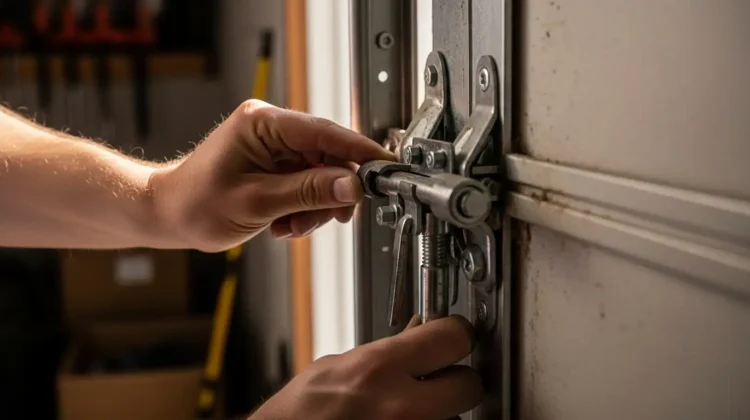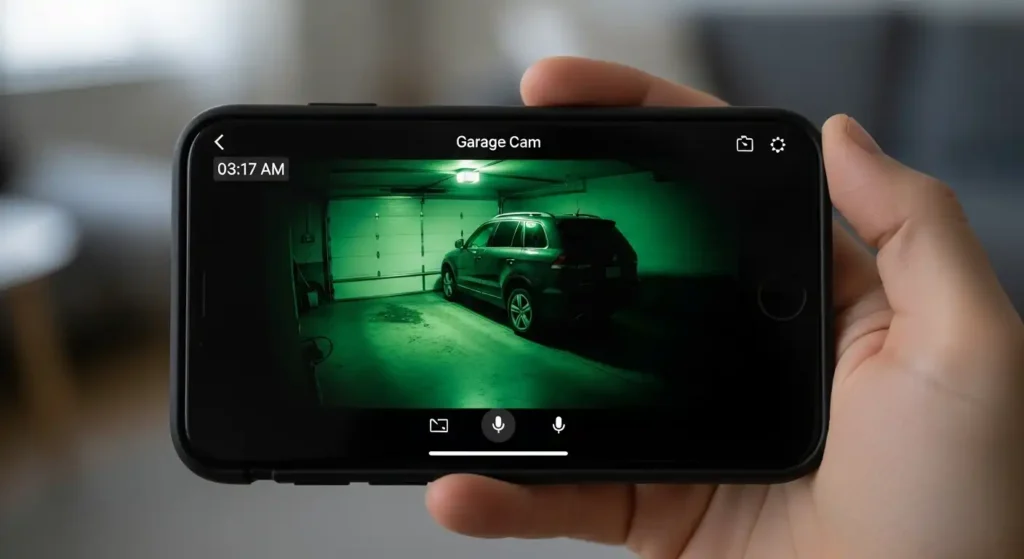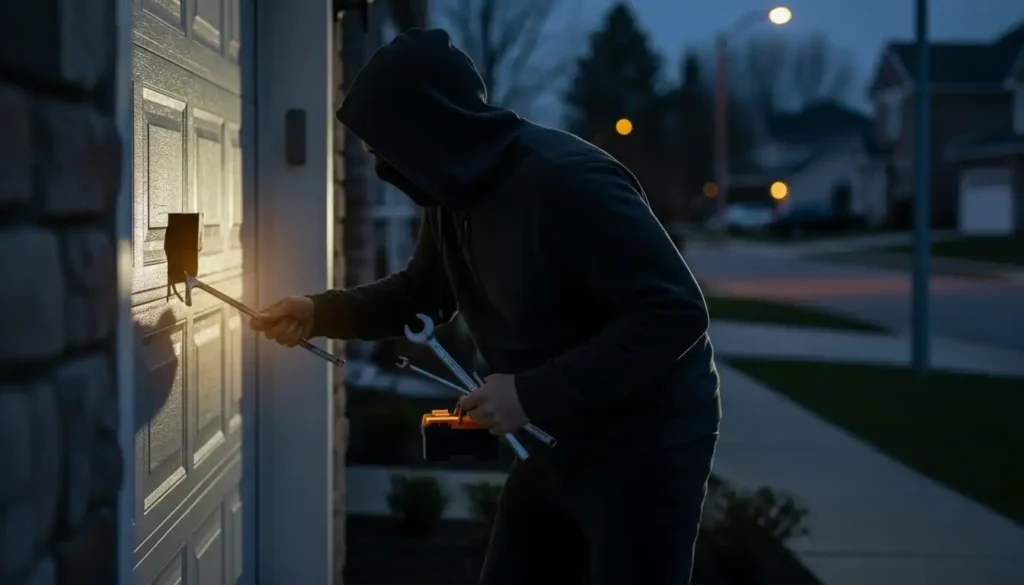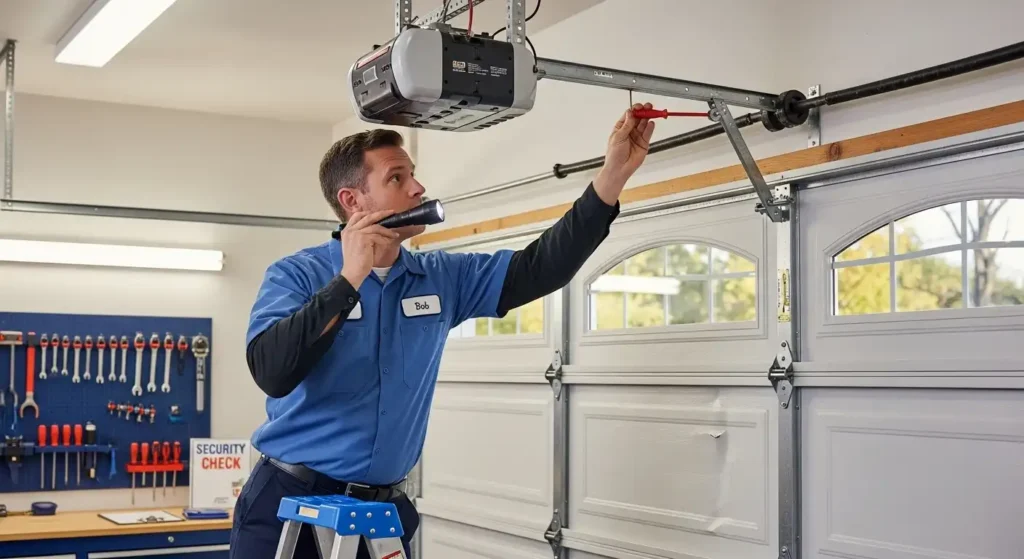
Your garage door is one of the largest and most frequently used entry points to your home — yet it’s often the most overlooked when it comes to security. Many homeowners focus on front doors or windows, forgetting that an unsecured garage can provide easy access to the rest of the house. Implementing strong garage door security tips is essential to keeping your family and property safe. In this comprehensive guide, we’ll explore practical ways to fortify your garage door against intruders using modern technology, proper maintenance, and smart safety habits.
Why Garage Door Security Is Important

Garages aren’t just for parking cars anymore. They often store tools, bikes, sporting goods, and sometimes even entryways to your home’s interior. According to the Federal Bureau of Investigation, a significant percentage of home break-ins occur through easily accessible areas like garages. Thieves target these spaces because older or poorly maintained doors can be manipulated quickly with basic tools.
A secure garage door protects more than your belongings — it also safeguards your family. By addressing vulnerabilities before they’re exploited, you reduce the risk of intrusion and improve your home’s overall security posture.
Common Garage Door Security Weak Points

Before exploring solutions, it’s important to understand the areas criminals commonly exploit. The most frequent vulnerabilities include:
- Outdated openers: Older models that use fixed codes are easy to hack using inexpensive signal grabbers.
- Weak emergency release cords: Burglars can sometimes hook the release lever through the top panel gap with a wire or coat hanger.
- Unlocked side doors: Detached garages or those with side access doors often go unprotected.
- Unsecured windows: Small windows can reveal valuables or provide access points if left unlatched.
- Neglected maintenance: Damaged seals or panels can create entry gaps or weaken overall door integrity.
Fortunately, most of these weaknesses can be eliminated with simple upgrades and consistent maintenance. For a step-by-step guide on system upkeep, see our seasonal garage door maintenance guide.
1. Upgrade to a Smart Garage Door Opener
One of the easiest ways to improve security is by upgrading to a modern smart garage door opener. These systems use encrypted communication and rolling-code technology, which changes the access code each time you open the door. This prevents hackers from intercepting and reusing signals from your remote.
Most smart openers also allow you to monitor and control your door via smartphone apps. You can check if the door is closed, receive alerts about unusual activity, and even close it remotely from anywhere in the world. To learn more about this technology, read our post on smart garage doors.
2. Install Motion-Sensing Lights and Cameras
Dark or poorly lit areas make it easier for intruders to approach unnoticed. Installing motion-sensing floodlights or integrated garage door lights deters unwanted activity. Many smart openers now come with built-in cameras and two-way audio, allowing you to monitor the area and communicate directly through your phone if movement is detected.
Additionally, connecting these systems to your home’s smart security hub lets you automate responses — for instance, turning on all outdoor lights or triggering an alarm if motion is detected near the garage.
3. Reinforce the Emergency Release Cord
While the emergency release cord is a vital safety feature, it can also be exploited by burglars. To secure it without compromising safety, use a zip tie or shield designed to block access from outside while keeping it functional from inside. This small, low-cost adjustment significantly increases garage door security.
4. Use Manual Locks for Added Protection
Even the most advanced opener can fail or lose power. A manual slide bolt or deadbolt lock gives you extra peace of mind. Look for models that secure directly into the vertical tracks, preventing the door from being forced open. Always engage these locks when you’re away for extended periods, such as vacations or business trips.
5. Cover Garage Door Windows
Windows can make your garage look stylish, but they also let outsiders peek inside. Frosted film or reflective tint can obscure visibility while still allowing natural light to enter. Avoid storing valuable tools or equipment in plain sight. As part of your regular inspections, check window seals and frames for gaps that could be exploited.
6. Maintain Your Garage Door Regularly

Many homeowners underestimate how much routine maintenance contributes to security. Loose bolts, worn springs, or damaged tracks can compromise the door’s ability to close securely. A neglected door might also fail to seal properly, creating a visible gap at the bottom — an open invitation to intruders. Conducting maintenance ensures both security and longevity.
For detailed advice on inspection schedules and safety checks, visit our article on garage door inspections. Regular upkeep ensures your door remains structurally sound and operationally secure year-round.
7. Install a Garage Door Timer
We’ve all driven away and wondered, “Did I close the garage door?” Leaving your door open — even briefly — provides easy access for opportunistic thieves. A timer automatically closes the door after a set period if it’s accidentally left open. Many smart openers include this feature by default, but timers can also be installed as standalone devices.
8. Secure the Interior Door to Your Home
If your garage connects directly to your house, treat that interior door as a second front door. Reinforce it with a deadbolt, strike plate, and smart lock. Consider using a solid-core door for added protection. Even if an intruder breaches the garage, this extra layer of defense can prevent them from entering your main living area.
9. Disconnect Power When on Vacation
If you plan to be away for an extended period, unplug your garage door opener or disable the remote function entirely. This prevents anyone from attempting to hack the system. You can also physically lock the track using a C-clamp or slide bolt to prevent manual lifting.
10. Consider Professional Security Audits
Sometimes, the best way to identify vulnerabilities is through a professional assessment. Security experts can inspect your garage for weak points and recommend improvements tailored to your home. They may suggest upgrades such as tamper-resistant brackets, reinforced panels, or integrated alarm sensors. These enhancements complement basic garage door security tips and provide peace of mind through expert validation.
Bonus: Integrate Your Garage Into Your Home Security System
Modern home security systems allow you to integrate the garage door seamlessly. You can link cameras, motion detectors, and door sensors into one ecosystem controlled from your smartphone or smart hub. This integration ensures immediate alerts if your garage door opens unexpectedly, allowing you to take quick action. For instance, your system could automatically trigger a lock command, flash exterior lights, or alert emergency services.
Final Thoughts
Your garage door may not be the first thing that comes to mind when you think of home security, but it’s one of the most critical barriers between your family and potential intruders. By following these garage door security tips — from upgrading to smart openers and reinforcing locks to maintaining your system — you create multiple layers of protection. A secure garage door not only deters break-ins but also improves safety, convenience, and property value.
For more expert insights, explore our guides on smart garage door technology and garage door safety features. Taking proactive steps today will ensure your garage remains secure for years to come.
